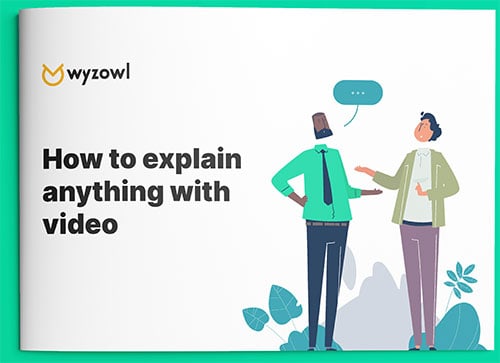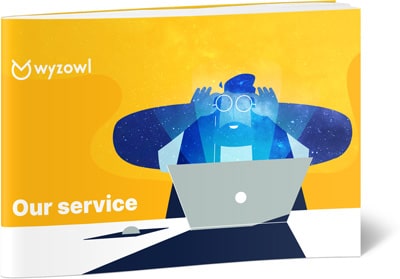Last updated on 28th November 2023
Transport yourself back to a time before selfies.
Before the internet.
Before VHS tapes!
Yeah, way back.
Once upon a time, film was shot on big, bulky cameras. When it came to creating TV news stories, this 16mm film was edited and projected onto a screen – using a film projector – then another camera would shoot that and broadcast the story to the world.
Are you following so far?
The problem with this method was that it made it difficult to cut back and forth between shots that had different audio, because audio was recorded on a thin strip of magnetic tape that was glued to the film stock – making it almost impossible to remove.
To solve this problem, studios began using a second projector. The first projector would show the main content, the A-roll. And the second projector would show interesting cutaways – and thus, B-roll was born.
Of course, things have changed even more since then, but B-roll is still prevalent and useful in a wide variety of media.
That’s why we’ve put together an ultimate guide to B-roll, including everything you need to know – from what it is to how to use it.
What is B-roll?
A basic, high-level definition of B-roll would be “supplementary footage”.
B-roll is secondary footage shot to complement your primary footage (your A-roll). B-roll is usually spliced together with A-roll to add more depth and impact to the story.
Here are 3 of the most common examples of B-roll footage:
1. Undirected footage
This is footage you shoot yourself on-site and use to complement the main footage you’ve shot.
For example, if you’re filming a video in Liverpool City Centre then your A-roll might revolve around the main subject or person in your video. And your B-roll could be undirected footage or commuters travelling through the city.
Here’s an example:
This video begins with B-roll to establish the place and time, before moving onto the main subject of the interview.
2. Stock footage
There are lots of stock footage sites online that should make it easy to find the B-roll you’re looking for. All you need to do is search for a key term to find footage that relates to the video you want to make.
More often than not you’ll have to pay a fee to use this footage in your projects, but occasionally you can find stock footage that’s completely free.
Here’s an example of stock footage in action:
Stock footage and imagery is used in this video to hammer home each point made by the voiceover.
3. Establishing shots
Establishing shots do exactly what they say on the tin. They’re there to establish your video in a date, time, and place.
Think of the shots of Hogwarts Castle in Harry Potter:
Capturing establishing shots like this is a great way to build atmosphere and transport your viewers to the world that your story takes place in.
A-roll vs. B-roll
We’ve already established that the basic difference between A-roll and B-roll is that one is primary footage and the other is supplementary.
A-roll isn’t really a term that’s even used in the film industry anymore, but B-roll is still a common term.
The biggest difference between A-roll and B-roll when it comes to shooting is that A-roll needs to be perfect. This is going to make up the main bulk of your video, so the lighting, sound, and everything inside the frame needs to be spot on.
With B-roll, you can be a little bit more free with what you capture. B-roll may not even require audio at all and – seeing as it’s just a supplement to the main footage and you’re probably not going to use it all – it doesn’t matter so much if your subject matter isn’t framed perfectly. You can easily tweak the footage in post-production.
You may be thinking, why even use B-roll at all? Why not just create a video that is 100% perfect A-roll?
Well, believe it or not, a video that’s entirely A-roll will probably feel strange to viewers. B-roll is important for establishing tone and altering the pacing of scenes. It can also be used to build authority (to back up what you’re saying in the A-roll) and increase levels of emotion.
Here’s a testimonial video from one of our customers, Configit. Notice the B-roll at the 15 second mark:
The B-roll in this video establishes setting and also complements what the interviewee is saying.
On a secondary level, the B-roll makes the video more engaging to watch because simply showing unedited footage from the interview (all A-roll) could make for quite a monotonous and uninteresting video.
B-roll gives filmmakers flexibility in the filming and editing process. What’s more, you can also use B-roll to mask any continuity errors that would otherwise mean you need to reshoot – pretty great, right?!
How to shoot B-roll
1. Work it into your plan
Just like you plan everything else in your video beforehand, you also need to plan your B-roll.
Take a look at your script or shot list, and make a note of what scenes would benefit from B-roll. For example, if you’re shooting a testimonial in an office building then perhaps you’d like some B-roll shots of the exterior or the break room.
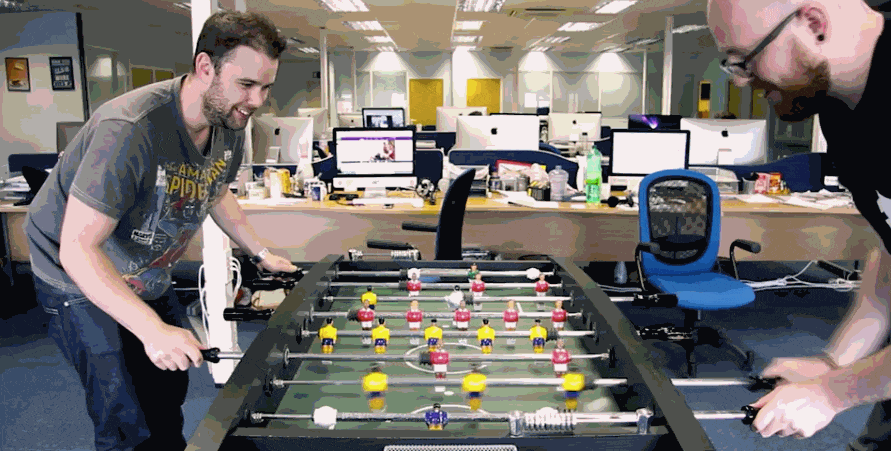
You should also scout the locations beforehand to make sure that you can quickly and easily shoot B-roll on the day. For example, if a room is dark then you’ll know to take extra lighting.
2. Use different angles
When shooting your B-roll, be sure to take a look at everything from a variety of different angles – high angles, low angles, bird’s eye, tilt, and so on.
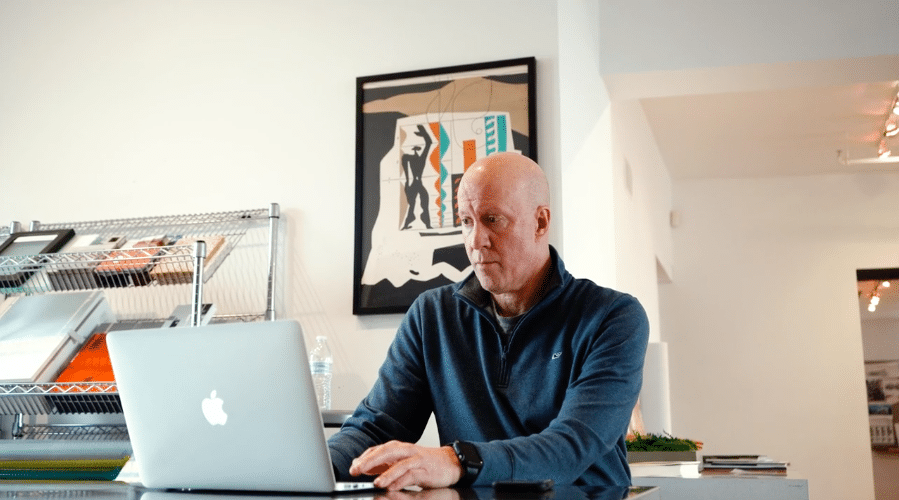
Mid-Shot
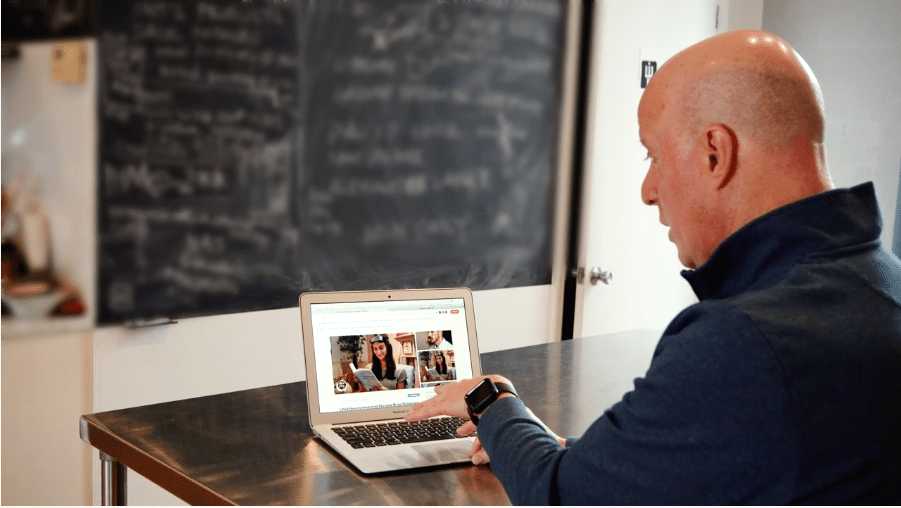
Over-the-shoulder
The more angles you get, the more shots you have to choose from when it comes to knitting your B-roll together with your A-roll.
3. Shoot more than you need
If you have the time, leave your camera rolling. You may catch something more interesting than you originally planned, or it might be a great idea to include a timelapse shot in your video.
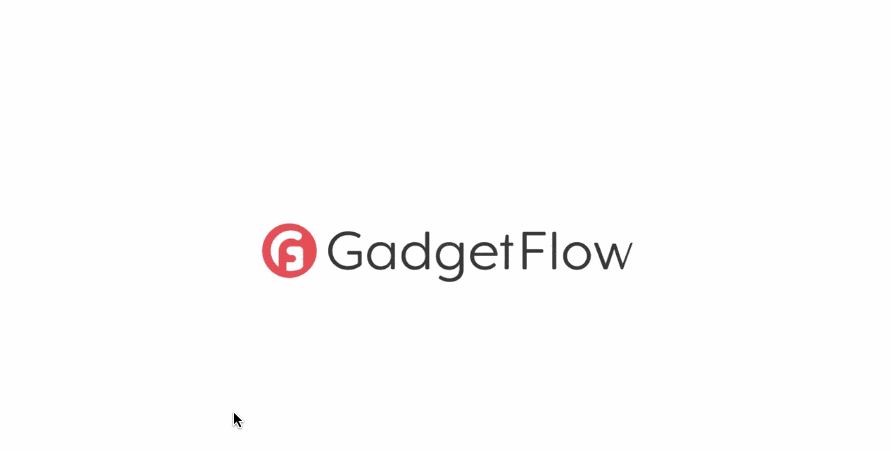
If you shoot more than you need then you’ll always have more to work with and this will really help you out when it comes to editing your video.
Best use cases for B-roll
1. Testimonials
According to our 2020 testimonials survey, 2 out of 3 people say they’d be more likely to make a purchase after watching a testimonial video.
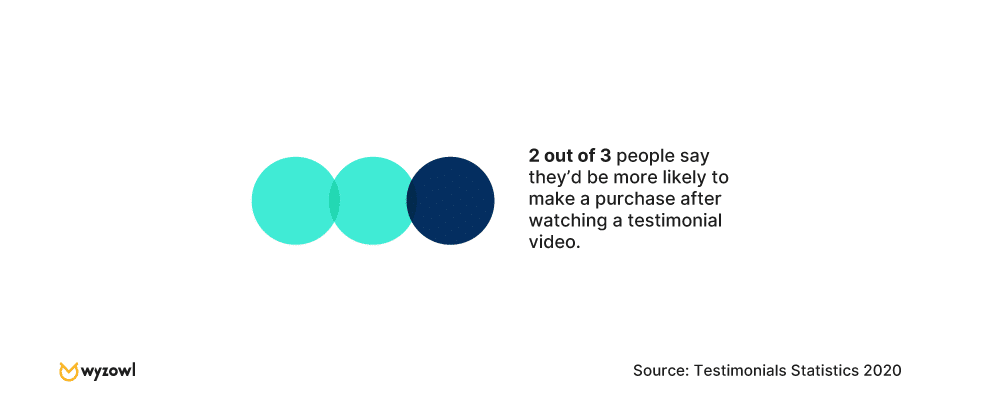
By showcasing your happiest customers, testimonial videos can boost your credibility and make it easier for new customers to make purchasing decisions.
Here’s an example of a Wyzowl testimonial video from Oxford University Press:
This video includes a lot of B-roll that not only establishes setting and increases authority, but also shows the value that the product has created for the customer.
This is particularly important when you consider that 39% of people say testimonial videos are effective because they help illustrate the impact a product or service can have on their life.
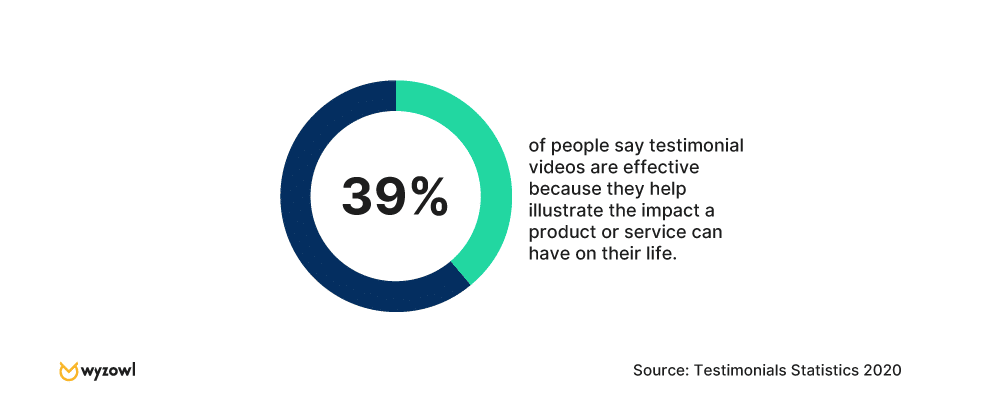
2. Ads
Yep, ads use B-roll too! Ads need to capture the attention of viewers from the start – and hold it until the end (where they can present their call-to-action).
Splicing B-roll together with A-roll is a great way to keep the story fresh and interesting.
Here’s an example from Doritos:
This ad uses lots of B-roll to complement the main story – most of it only staying on screen for a second or so. This keeps the pace up, and the viewer engaged.
3. Documentaries
It’s important for documentaries to set the scene of the story they are presenting to viewers, and also to ensure they tell that story with a level of authority.
B-roll can help to achieve both of these goals.
Here’s an example from the Netflix documentary, Our Planet:
B-roll is used to showcase the planet’s natural beauty, and also to highlight the impact of climate change.
4. News reports
News reports are where B-roll began. And news videos still feature B-roll to this day. B-roll is great for reporting because it breaks up the monotony of viewing a reporter reading from an autocue, and also helps to add authority to the story.
Here’s an example from Food Insider:
B-roll is so integrated into our news reports, that we almost expect to see it. This video uses mostly B-roll and does so in a really engaging way, with some shots even appearing to move in time with the upbeat soundtrack.
5. Movies/TV
Lastly, B-roll is also widely used in film and television. This can be to establish tone. For example, if it’s a character’s first day of school and they’re nervous then B-roll scenes of the corridors and classrooms could be used to emphasise this feeling.
B-roll is also used to fix continuity errors. For example, if an A-roll shot you were planning on using has a crew member in it, you can switch it out for a B-roll shot.
Another use of B-roll in film and TV is to establish the setting. Think of the regular cutaways of New York City in F.R.I.E.N.D.S:
Final thoughts
B-roll is one of those subjects that seems uninteresting on the surface, but once you dive in it can be quite fascinating!
The next time you’re watching something, see if you can spot how many times B-roll is used – probably more than you’d think!
One of the most common, everyday use cases for B-roll is testimonial videos. Every business needs at least one great testimonial video to help win trust, boost credibility, and – most importantly – convert customers.
Check out our video testimonial service page to find out more.





